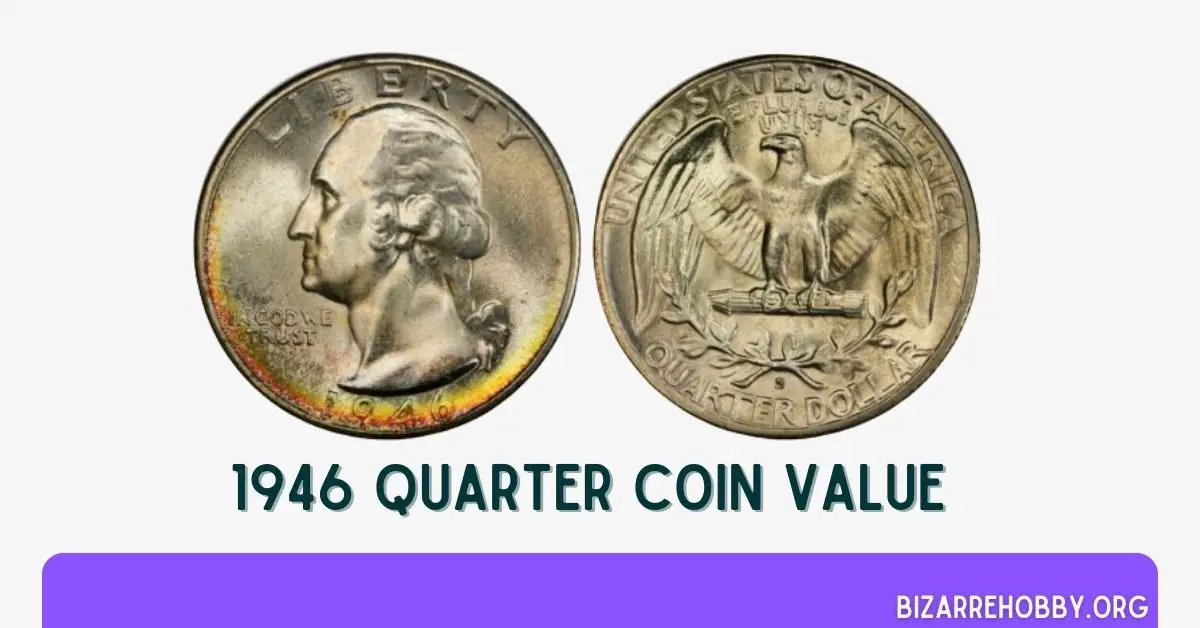Discovered a quarter from 1946? Curious about its potential value? You’ve landed in the right site!
We’re here to provide all the essential details about the worth of 1946 quarters. We’ll explore how factors like mint marks and condition influence the prices collectors are willing to pay. We’ll also delve into some intriguing error coins and their respective values.
Additionally, we’ll take you through the design elements and historical background of this fascinating coin.
Ready to dive in? Let’s get started!
Value Chart for 1946 Quarter
| Mint mark | XF45 | MS60 | MS65 | MS67 |
|---|---|---|---|---|
| 1946 No Mint Mark Quarter Value | $6 | $10 | $38 | $650 |
| 1946 D Quarter Value | $6 | $10 | $32 | $285 |
| 1946 S Quarter Value | $6 | $10 | $28 | $275 |
History of the 1946 Quarter
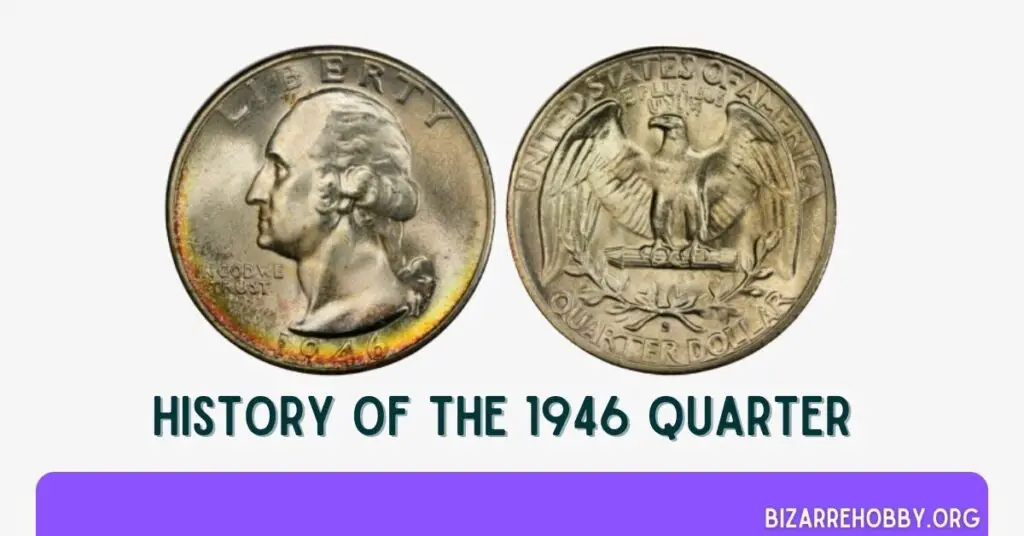
The Washington quarter gets its name from America’s first president, George Washington, whose likeness graces the obverse or “heads” side of the coin. The Washington quarter series began in 1932 and continues to be minted today.
Initially, the series was conceived to commemorate the 200th anniversary of Washington’s birth. The 1946 quarter, like its predecessors, was composed of 90% silver and 10% copper. However, by 1965, rising silver prices were impacting production costs.
Adding to the Treasury’s challenges, the public began hoarding quarters, anticipating that the silver content might soon exceed the coin’s face value.
In response, the Treasury eliminated silver from both quarters and dimes. The new versions featured a copper core, clad in a copper-nickel alloy to maintain a silvery appearance.
While the new quarters maintained the same dimensions as their pre-1965 counterparts, the composition change resulted in a slightly lighter coin – 5.67 grams compared to the 6.3 grams of the silver versions.
The harder composition of the new coins made striking more challenging. As a result, minor design adjustments were made, lowering the highest relief areas to ensure all details could be captured effectively.
Apart from these modifications, the design remained consistent from 1932 through 1998. The latter year saw a new reverse design to celebrate 200 years of American independence. Since then, several new Washington quarter series have been introduced, including the popular 50 States quarters.
In 1946, business strike quarters were produced at the Philadelphia, Denver, and San Francisco Mint facilities. Denver and San Francisco quarters bear mint marks, while those from Philadelphia are unmarked.
Features of the 1946 Quarter
The 1946 Washington quarter stands as a testament to American history and numismatic artistry. This coin, minted in the immediate aftermath of World War II, carries unique features that set it apart from both its predecessors and successors in the Washington quarter series.
Obverse Design of 1946 Quarter
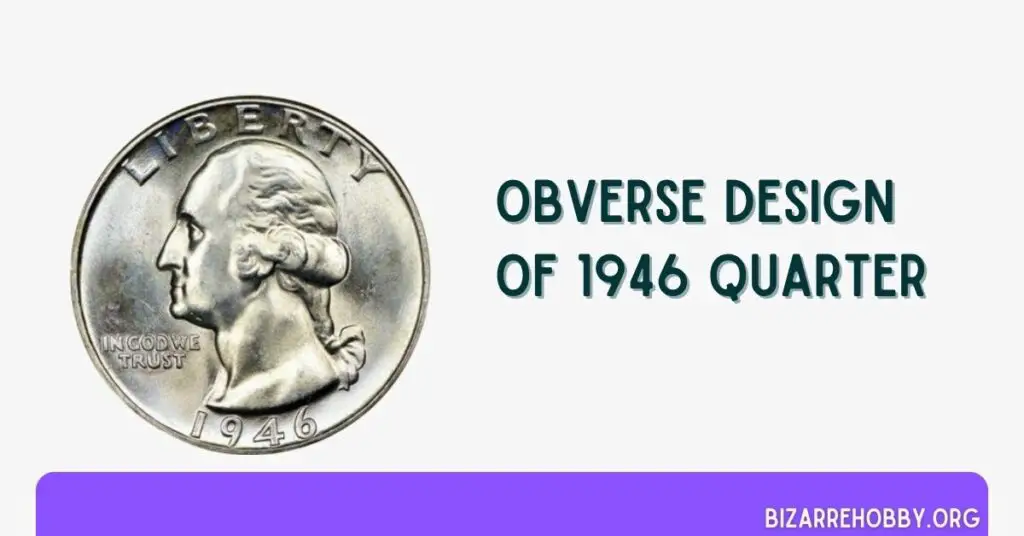
The 1946 quarter obverse showcases a portrait of George Washington, a design that remained in use from 1932 to 2022. This iconic image was crafted by sculptor John Flanagan, though it wasn’t the initial choice for the coin’s face.
Originally, plans to commemorate Washington on U.S. currency involved featuring him on the half dollar. The initial concept was for a limited minting in 1932, marking the bicentennial of Washington’s birth.
A dedicated committee oversaw the anniversary preparations, selecting a portrait by artist Laura Gardin Fraser for the coin’s obverse. However, the project took an unexpected turn.
The Treasury decided to make the Washington coin a permanent addition to circulation and opted for the quarter denomination instead of the half dollar. This shift moved the design decision from the Bicentennial Committee to the Treasury Department.
Treasury Secretary Andrew W. Mellon favored Flanagan’s rendition over Fraser’s. When Mellon departed his position before coin production began, the committee appealed to his successor, Ogden L. Mills. Despite their efforts, Mills maintained the previous decision, cementing Flanagan’s design as the chosen artwork. Careful examination of a 1946 quarter reveals the artist’s initials discreetly placed at the base of the portrait.
Interestingly, Fraser’s design eventually found its place on American coinage. Her portrait of Washington is featured in the American Women quarter series, launched in 2022, offering a fresh perspective on the first president’s image.
The obverse of the 1946 quarter includes several key elements. “LIBERTY” is prominently displayed above Washington’s portrait, while the date curves along the bottom edge. The phrase “IN GOD WE TRUST” is nestled to the left of the portrait, just below Washington’s chin, completing the design’s patriotic theme.
Reverse Design of 1946 Quarter
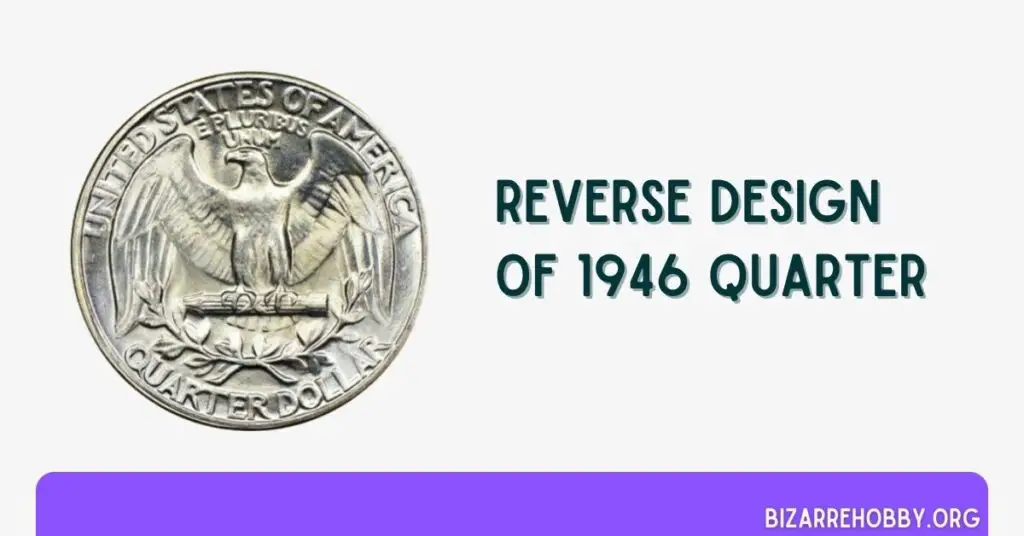
John Flanagan also designed the reverse side of the 1946 quarter, creating a powerful image that complements the obverse. The centerpiece is a majestic heraldic eagle with wings spread wide, symbolizing strength and freedom. The eagle stands atop a bundle of arrows, representing readiness for defense, while an olive branch wreath below signifies the nation’s desire for peace.
“UNITED STATES OF AMERICA” arches between the eagle’s wingtips and the coin’s edge, clearly identifying the issuing country. The Latin motto “E PLURIBUS UNUM” (meaning “Out of many, one”) is inscribed above the eagle’s head, reflecting the unity of the states in forming the nation.
The coin’s denomination, “QUARTER DOLLAR,” is curved along the bottom edge, clearly stating its monetary value.
An interesting detail to note is the placement of mint marks on 1946 quarters. Unlike later issues where mint marks appear on the obverse, the 1946 coins display them on the reverse. Collectors should look for a small “D” (Denver) or “S” (San Francisco) just below the olive branch wreath. Quarters minted in Philadelphia bear no mint mark.
Technical Specifications of 1946 Quarter
The 1946 quarter has several physical attributes that distinguish it from modern quarters. It weighs 6.3 grams and measures 24.3 millimeters in diameter. Composed of 90% silver and 10% copper, it differs significantly from the copper-nickel clad quarters produced from 1965 onward.
The coin’s edge features a series of parallel grooves known as reeding. This design element, introduced in the 18th century, served as an anti-counterfeiting measure, making it easy to detect if precious metal had been shaved from the coin’s edge.
The 1946 quarter benefited from die refinements implemented in 1944. These improvements resulted in a clearer typeface and larger date compared to earlier Washington quarters, enhancing the overall visual appeal and legibility of the coin.
It’s worth noting that the silver content of these quarters makes them valuable beyond their face value. As of 2024, the melt value of a 1946 quarter significantly exceeds 25 cents, though the exact value fluctuates with silver prices.
Collectors also prize these coins for their historical significance, representing a pivotal period in American history following World War II. The 1946 quarter serves as a tangible link to the past, embodying both artistic merit and economic history in a single, enduring piece of currency.
1946 Quarter Grading Guides
| Grade Number | Grade |
|---|---|
| 1 | Basal State-1 |
| 2 | Fair |
| 3 | Very Fair |
| 4, 5, 6 | Good |
| 7, 8, 10 | Very Good |
| 12, 15 | Fine |
| 20, 30 | Very Fine |
| 40 | Extremely Fine |
| 50 | About Uncirculated |
| 60 | Mint State |
| 65 | Mint State |
| 70 | Mint State |
Please check our Washington quarter grading guide to know your coin’s exact value, It’s the necessary step to know the exact value of your 1946 quarter.
1946 Quarter Value Guides
The 1946 quarter holds a special place in American numismatics, marking the first full year of peace-time coinage production following World War II. This transition period in U.S. history is reflected in the coin’s composition and mintage numbers, making it an intriguing subject for collectors and investors alike.
Let’s explore the value of these coins from different mint locations and in various conditions.
1946 Philadelphia (No Mint Mark) Quarter Value
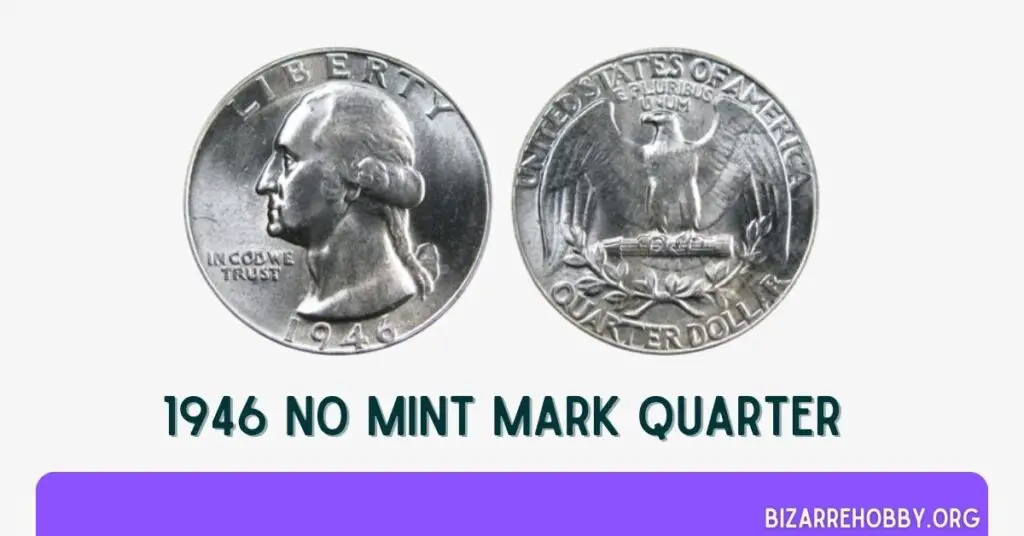
The Philadelphia Mint was the powerhouse of quarter production in 1946, striking over 53 million coins. Despite this large mintage, only a fraction survive today, particularly in higher grades.
For collectors seeking circulated examples, a 1946 Philadelphia quarter in XF45 condition (extremely fine) can be acquired for around $7. Uncirculated coins start at approximately $12 for an MS60 grade, increasing to $40 for a gem MS65.
The value jumps significantly for higher grades. An MS67 coin is estimated at $700, while an MS67+ commands about $2,600. However, market conditions and individual coin characteristics can greatly influence prices.
A notable sale occurred in 2003 when an MS67 1946 quarter with attractive toning fetched an impressive $8,050 at auction. While this remains a record, it’s worth noting that grading standards have evolved, and more high-grade examples have since been certified.
1946 D Quarter Value
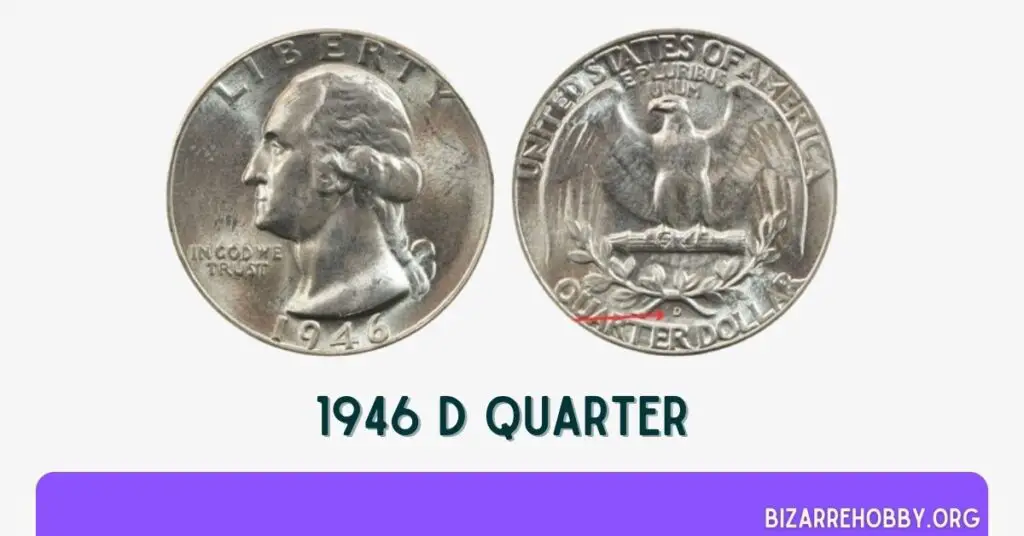
The Denver Mint produced just over 9 million quarters in 1946, significantly fewer than Philadelphia. However, due to good preservation rates, these coins are relatively available in most grades.
A 1946-D quarter graded XF45 is valued similarly to its Philadelphia counterpart at about $7. In uncirculated condition, an MS60 coin is worth around $12, while a gem MS65 fetches approximately $35.
Interestingly, the 1946-D is one of the more accessible Washington quarters in gem condition. An MS67 example is valued at about $300, making it an attractive option for collectors seeking high-grade coins without breaking the bank.
At the highest grades, values increase substantially. MS67+ coins are estimated at $3,300, while the sole MS68 example certified by PCGS is a true condition rarity.
1946 S Quarter Value
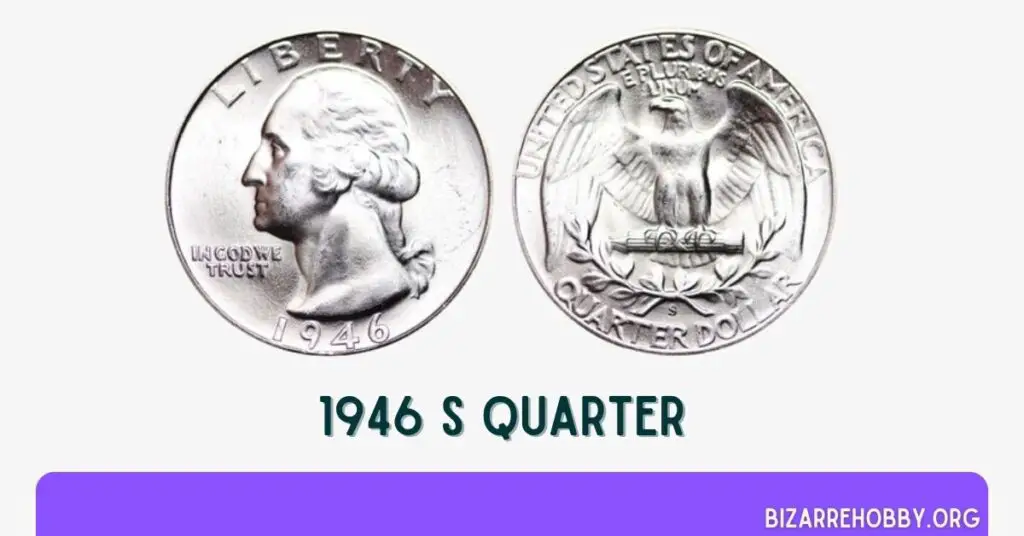
The San Francisco Mint struck the fewest 1946 quarters, with a mintage of just 4,204,000. This low production number caught the attention of contemporary collectors, leading to the preservation of many uncirculated rolls.
As a result, the values of 1946-S quarters closely mirror those of their Philadelphia and Denver counterparts in most grades. An XF45 coin is worth around $7, an MS60 about $12, and an MS65 approximately $30.
The abundance of well-preserved examples means that even high-grade coins are relatively affordable. An MS67 1946-S quarter is valued at about $285, offering excellent value for its quality.
However, at the highest grades, prices escalate rapidly. An MS67+ coin commands nearly $1,000, while the handful of MS68 examples known are valued at approximately $11,000 each.
For collectors and investors, the 1946 quarter series offers a range of options at various price points, from affordable circulated examples to rare, high-grade specimens. As with all numismatic pursuits, thorough research and careful examination are key to making informed decisions in this fascinating area of coin collecting.
Rare 1946 Quarter Errors List
The world of numismatics is often enriched by errors and varieties that occur during the minting process. The 1946 quarter is no exception, with several interesting variations that have caught the attention of collectors.
Let’s explore some of these rare 1946 quarter errors and their potential values.
1946 S/S Quarter: Re-Punched Mint Mark
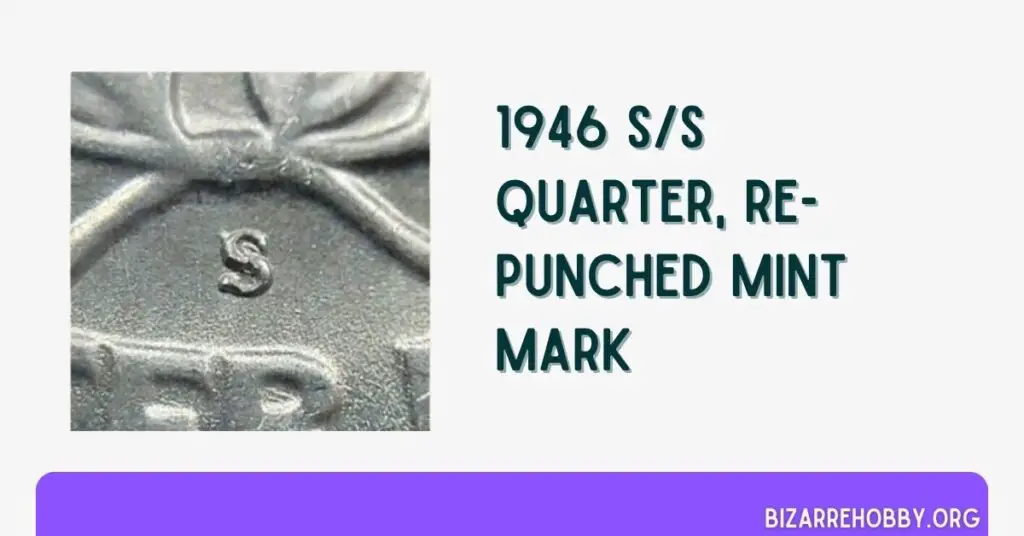
Among the San Francisco-minted quarters of 1946, a fascinating error exists where the mint mark was stamped twice. This variety, known as the S/S or repunched mint mark, requires careful examination to spot.
To identify this error, you’ll need magnification. Look closely at the “S” mint mark beneath the olive branch wreath on the reverse. You should be able to discern a faint outline of another “S” slightly above and to the left of the primary mark.
The value of these error coins varies significantly based on condition:
- In circulated grades (G4 to AU58), they typically command $15-20.
- Uncirculated examples (MS60-MS64) range from $20 to $50.
- Gem-quality coins (MS65 and above) see a notable increase, with MS65 specimens valued around $70.
- The highest graded example, an MS67+, is estimated at $2,500.
It’s worth noting that the premium for this variety is relatively modest in lower grades, making it an accessible option for budget-conscious collectors interested in error coins.
1946 D/D Quarter: Re-Punched Mintmark
Interestingly, Denver-minted quarters from 1946 also exhibit a similar repunched mint mark error. This D/D variety is generally rarer than its San Francisco counterpart, which is reflected in its higher values.
The value scale for the 1946 D/D quarter is as follows:
- Circulated examples start at about $10 and remain relatively stable through AU grades.
- Uncirculated coins (MS60-MS64) see values increase from $25 to $100.
- Gem-quality specimens are significantly rarer. An MS65 is valued at approximately $700.
- The finest known example, graded MS66, carries an estimated value of $950.
The scarcity of high-grade specimens makes this an exciting target for collectors focusing on mint errors or seeking to complete a high-grade set of Washington quarters.
Additional 1946 Quarter Varieties
While the S/S and D/D varieties are the most well-known, other minor varieties exist among 1946 quarters. These include:
- Doubled Die Obverse: Some coins show slight doubling on certain obverse elements, particularly noticeable in the lettering.
- Struck Through Errors: Occasionally, foreign material got between the die and planchet during striking, resulting in areas of weakness or strange textures on the coin’s surface.
- Off-Center Strikes: A small number of 1946 quarters were struck off-center, with part of the design missing and a corresponding blank area on the coin.
These varieties are generally rarer and can command significant premiums, especially in higher grades or for more dramatic examples.
For those interested in a visual guide to these errors, numismatic YouTube channels like Couch Collectibles and Rob Finds Treasure offer detailed videos examining various 1946 quarter errors and varieties.
Where to Sell Your 1946 Quarter?
If you’ve discovered a valuable 1946 quarter in your collection, you might be wondering about the best places to sell it. Here are some popular options:
- Online Marketplaces: Platforms like eBay and Etsy offer wide exposure to potential buyers. However, be prepared to handle shipping and potential customer service issues.
- Coin Dealers: Local coin shops or online dealers specializing in numismatics can offer quick sales, though possibly at slightly lower prices than you might get selling directly to collectors.
- Auction Houses: For particularly rare or valuable specimens, specialized numismatic auction houses can help you reach serious collectors willing to pay premium prices.
- Coin Shows: These events provide opportunities to meet dealers and collectors face-to-face, potentially securing better prices for your coins.
- Online Coin Forums: Websites like Coin Community and Coin Talk have marketplace sections where you can list your coins for sale to a dedicated numismatic audience.
Remember to research current market values, consider getting valuable coins certified by a reputable grading service, and always prioritize secure shipping methods when selling coins online.
FAQs on 1946 Quarter
How much silver is in a 1946 quarter?
A 1946 U.S. quarter contains 90% silver, which is approximately 0.1808 troy ounces of silver.
Which Year is the Rarest Washington Quarter?
One of the rarest U.S. quarters is the 1932-D Washington quarter. It was minted during the Great Depression and has a low mintage, making it highly sought after by collectors. Another rare quarter is the 1916 Standing Liberty quarter, which is also valued due to its limited production.
Final Thoughts
The 1946 quarter, with its rich history and intriguing varieties, offers something for collectors at every level. Whether you’re drawn to the historical significance of post-war coinage, fascinated by mint errors, or simply curious about the value of a coin you’ve inherited, the 1946 quarter presents a captivating subject.
From the more common Philadelphia issues to the scarcer Denver and San Francisco mintages, and from circulated specimens to gem-quality examples, each coin tells a unique story. The presence of interesting errors like the repunched mint marks adds another layer of excitement for the discerning collector.
As with all numismatic pursuits, remember that condition is key in determining value, and authentication is crucial for rarer varieties. Whether you’re looking to start a collection, add to an existing one, or simply understand the worth of a family heirloom, the 1946 quarter continues to be a fascinating piece of American coinage history. Its enduring appeal ensures that it will remain a sought-after coin for generations to come.
